A nation is tearing itself apart, as Nationalists and Republican forces fight a bloody war
Type: Singleplayer, Multiplayer
Genre: Strategy
Developer: Headquarter S.L.
Publisher: Avalon Digital
Avalon Digital Website
Release date: 5 Aug, 2019


The Spanish civil war is a dark chapter in European history, one that often gets overshadowed by the events that transpired after it. It’s also a conflict that we also rarely see represented in games, or at best it gets a mention in a WW2-focused game. But Battles for Spain is only focusing on the Spanish civil war, and the two (?) sides that fought it.
Battles for Spain is a turn-based strategy game that deals with 4 of the most famous battles of the war. Each battle is its own standalone scenario, where you can pick between either of the two sides and play against the AI, or a friend. Each battle is only a few days long, and the game tries to stay at least a bit accurate to its historical source material, so it’s not a game about amassing a large army, but rather the proper use your limited forces.
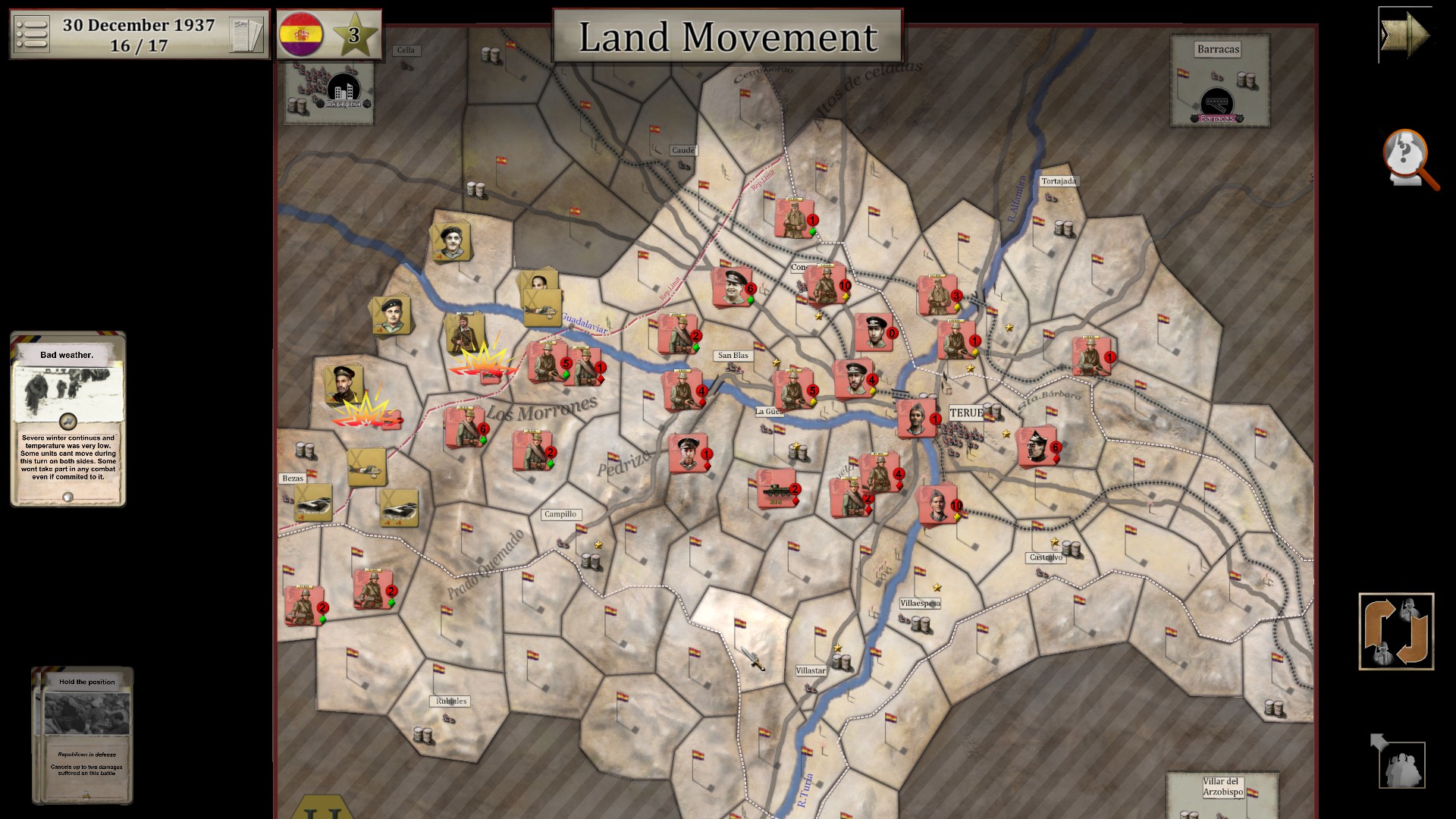
Graphics & Sound
Battles for Spain is not a big-budget AAA game, that much is clear just from the screenshots. It looks like a digital adaptation of a tabletop wargame, with a static map divided into separate areas representing the battlefield, and square counters with small numbers on them being used to represent troops. The graphics looks a bit sparse, but it’s not unattractive looking, and most importantly, it is easy to read. The game goes further with its tabletop wargame aesthetic and uses 10-sided dice as a visual representation of its random elements.
Sound is similarly simple, you’ve got some sounds for moving troops, dice rolls and so on, and these also lean into the whole digital board game thing. It’s perfectly fine, but much like the graphics, a bit sparse, and there’s not much to say about it.
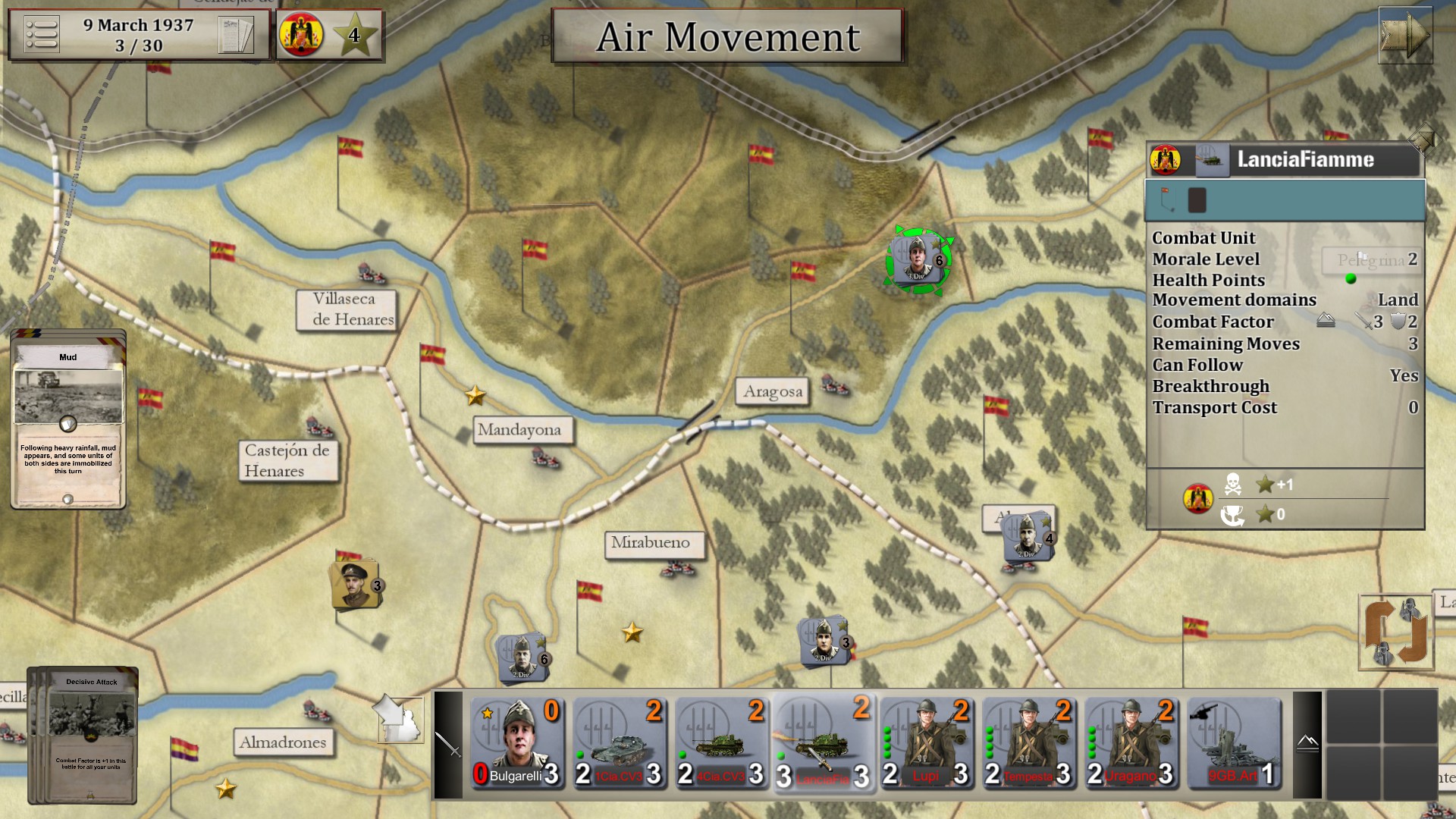
Story & Setting
The Spanish civil war can to some degree be seen as a prelude to World War 2. You’ve got the Nationalist army, backed by Germany and Italy fighting against the Republican army, which in turn was supported by France and the Soviet Union. The Nationalists won, and Spain was ruled by the dictator Francisco Franco up until the mid 70’s. Somewhere between half a million and one million people lost their lives during the war as a direct result of the fighting, or execution squads that followed, and an unknown number of people also died due to starvation or disease in the wake of the war. Needless to say, the Spanish civil war was a humanitarian disaster, and it would take decades for Spain to recover.
There are four scenarios in Battles for Spain, depicting some of the most famous engagement during the war. All of these get a small write-up, explaining what events took place, and each individual scenario also has a fair amount of details that show that the developers did their homework. This is not quite a historical simulation, but it’s doing a good job at representing what went on during these engagements, from a military point of view, although like in most wargames, it’s just the military side that matters, and you don’t need to worry about the civilian side.
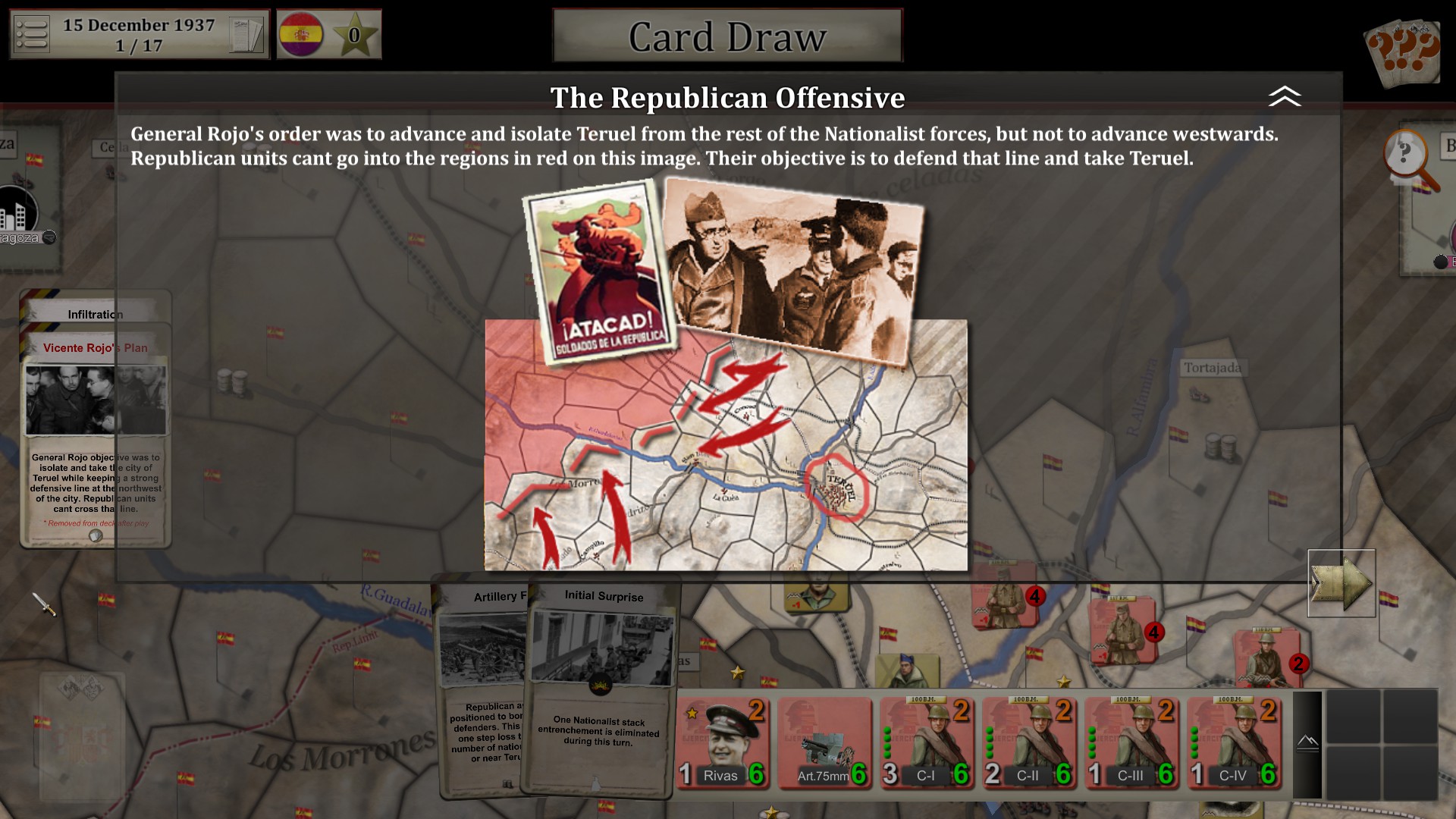
Gameplay
In Battles for Spain, you take control of one of two armies, and the goal is to accumulate more victory points than the other side. Victory points are earned by beating opposing armies in battle, as well as controlling important locations. Some scenarios also have specific win conditions where if you accomplish them, you win automatically.
The game looks a bit intimidating at first glance, but it’s surprisingly straight forward and user-friendly. Each turn is split into distinct phases, like card draw, air movement, ground movement and so on, and so you never get overwhelmed with things to do. Things you can interact with also has a clear visual effect, that can be a little bit annoying at times, but it also means that you won’t randomly forget an army somewhere.
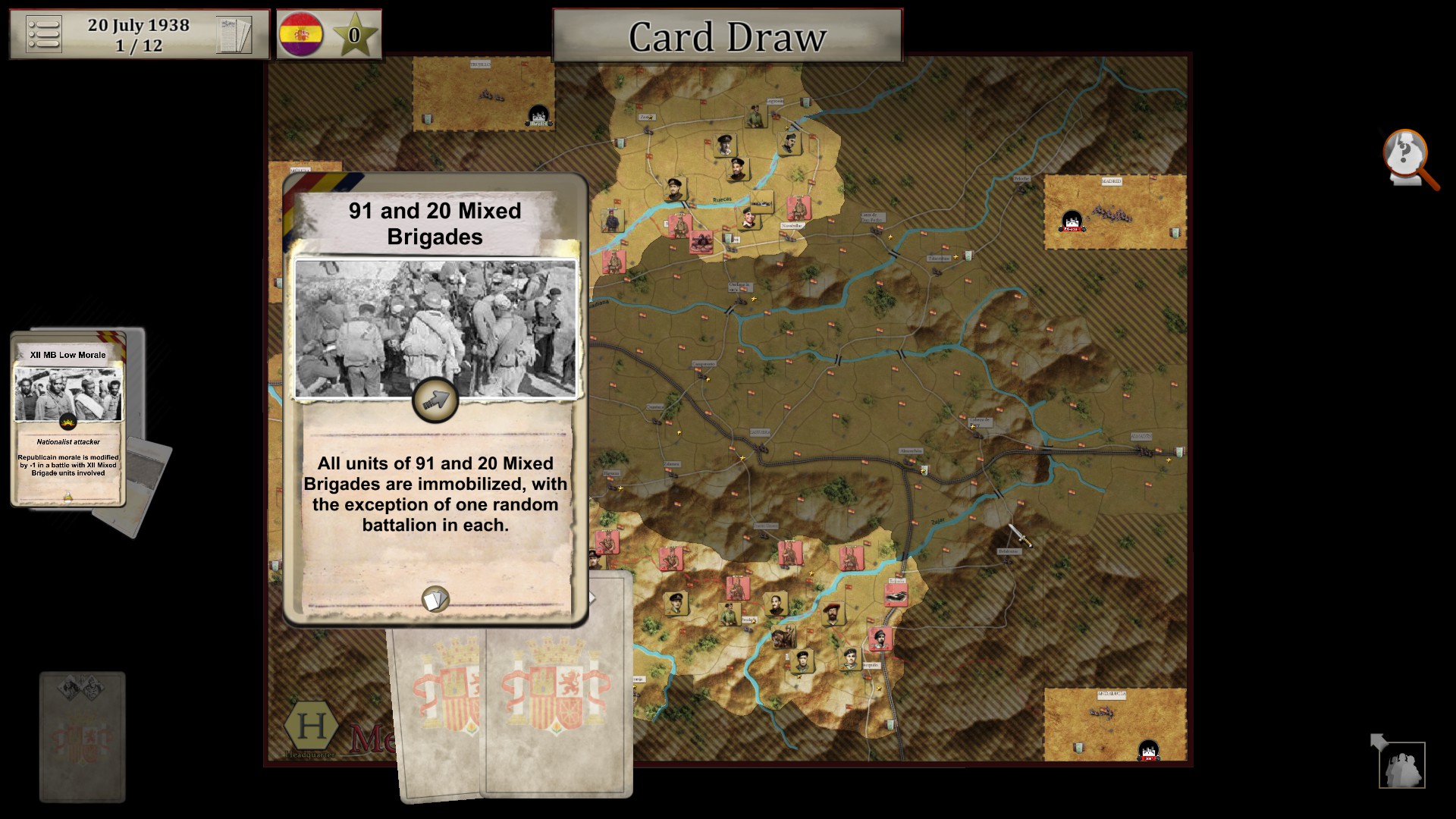
At the start of your turn, you draw a few cards, and the effects of these can range from more troops joining your cause to bonuses in combat to negative effects that slow down your army. Every scenario has its own set of cards, and there are a bunch that are shared between the scenarios. This is where a lot of the game’s flavour comes into play, as the cards unique to the scenarios are often pretty good at representing the special conditions of the battle.
Like most wargames, it’s movement that really wins you the game. Knowing when to attack, and when to retreat is important, but even more important is keeping track of your supply lines. The supply system is straight forward, as long as you can draw an uninterrupted route from a friendly supply depot through areas you control to your army, it’s in supply, but if a unit gets cut off, it will die after a few rounds. This means that if the enemy has a strong defensive position, it might be better to try and cut off their supply rather than fight them head-on.
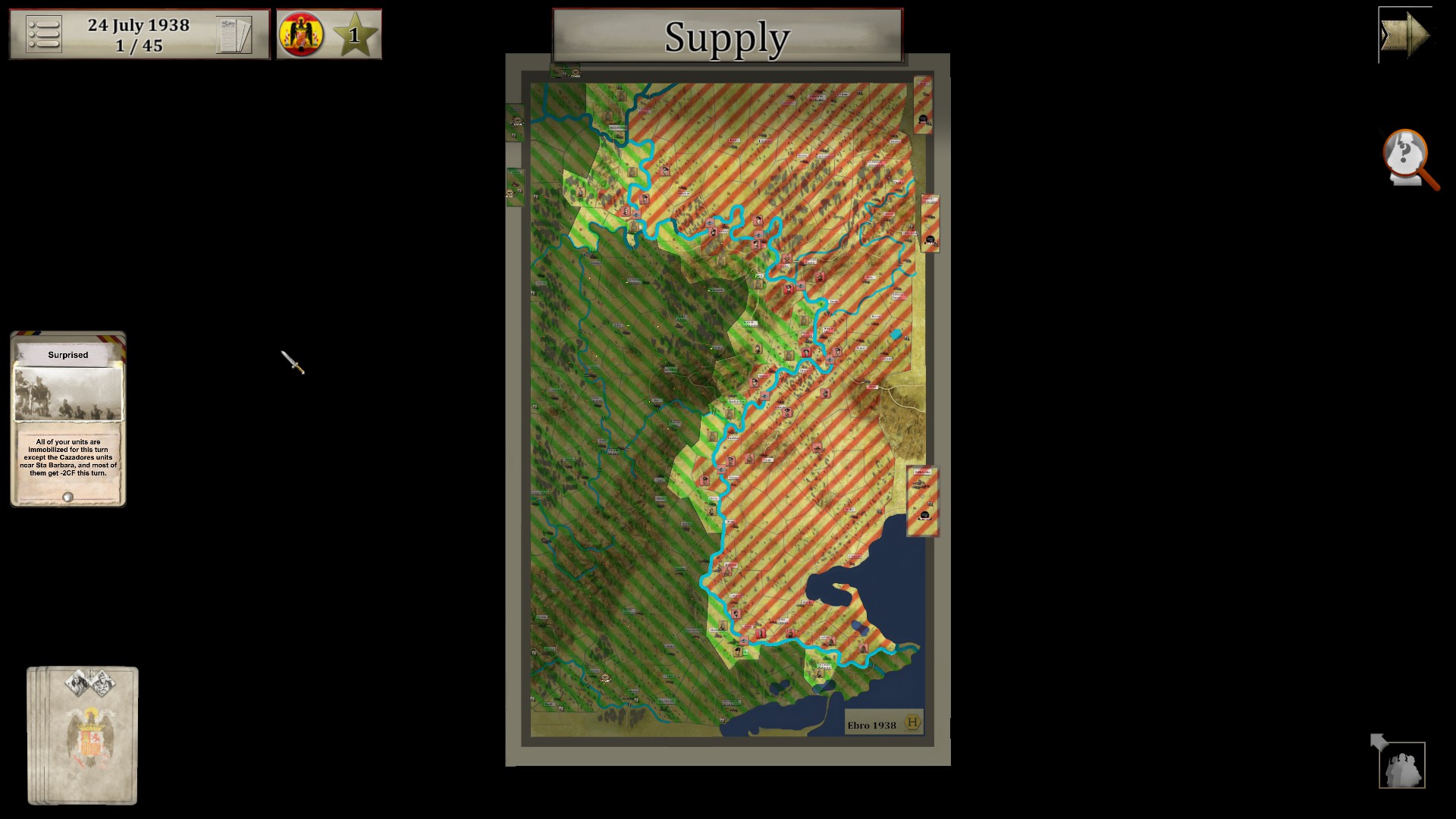
Once you’ve moved your forces, combat starts. If an area has troops from both sides, they’ll fight. Both sides first gets to play their cards, and then there’s two (unless modified by cards) rounds of fighting, where both sides roll a die for every unit that’s engaged in battle, modified by unit strength, terrain effects, artillery and so on, and supported by any aircrafts that are in the area. Roll well enough and you’ll inflict damage on the enemy, or make their units run away. Win and you can push the enemy out of an area, and claim it for yourself.
Battles for Spain looks, and to some extent feels like a tabletop wargame, but it uses the fact that it’s a digital game to good effect. The game uses a fog of war system, and you can’t see beyond the areas right next to the ones you control, unless you fly over them, something that would be very hard to do with a conventional board game. And the entire area control system would also be tedious to do if you had to do it by hand, but luckily the game does it for you here.
While Battles for Spain is surprisingly easy to learn and user-friendly, it does not have a tutorial, which makes it harder to get into than it really should be. There’s a manual that you can access in-game, but that’s really no substitute for a good tutorial. Experienced wargamers should have no real trouble getting into it, after reading the quick introduction in the manual, but for someone who’s never touched a wargame in their lives, it will be an uphill struggle.
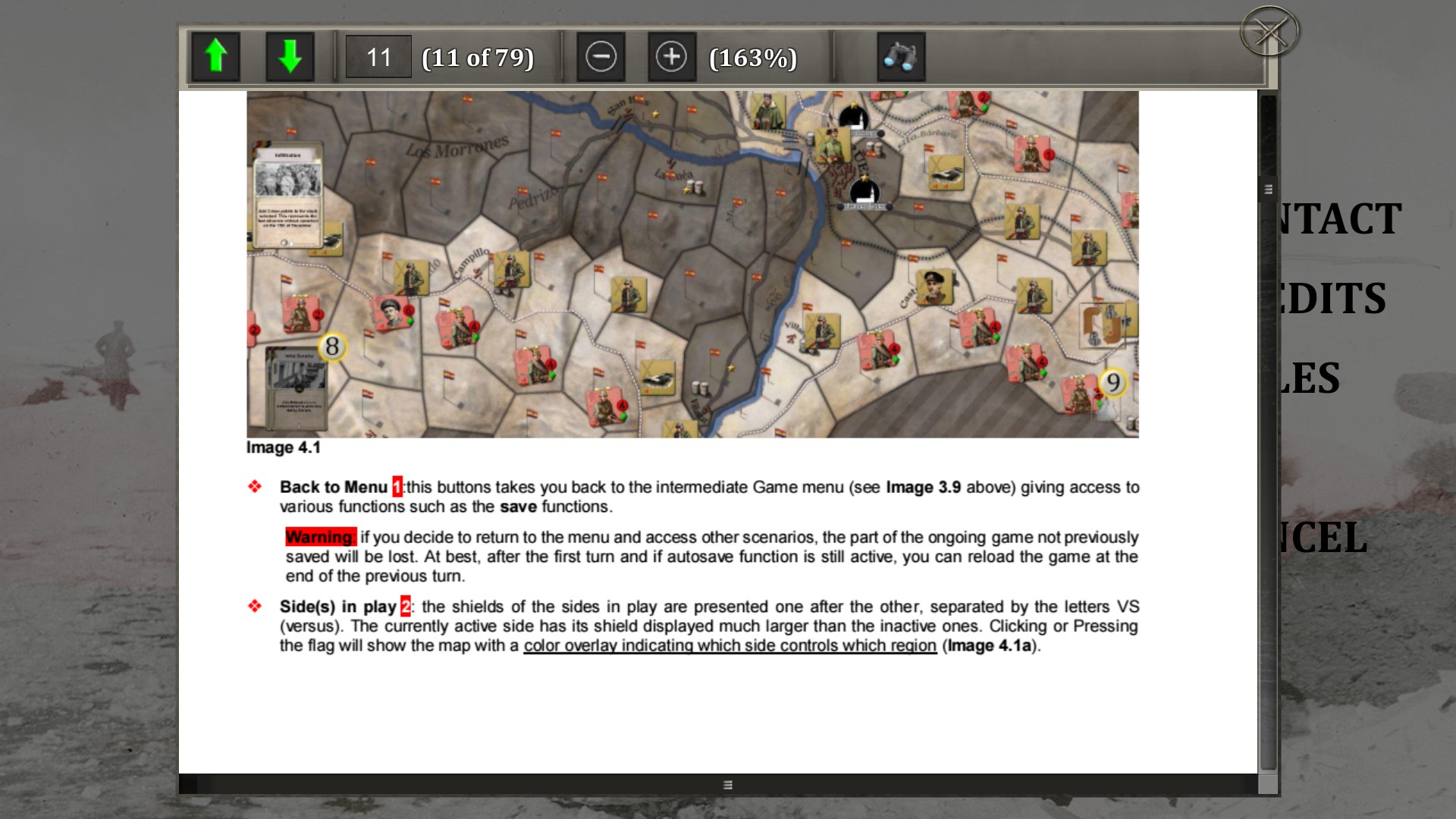
Closing thoughts
I went into Battles for Spain expecting something like an Ageod game, but it’s a lot simpler and more approachable than those. It also managed to sink its teeth into me right away. When I first booted it up, I just intended to familiarize myself with the interface and controls, and suddenly 2 hours had passed. But as fun as I had with it, I can’t deny that it has some serious flaws.
The lack of tutorial is a pretty big issue for anyone new to these types of games. Having a manual is nice, but it would have been good if there was a quick tutorial scenario that teaches you the basics. The manual could also have used some proofreading, as it is pretty obvious that it was not written by a native speaker. It’s never so bad that it becomes hard to read, but nor does it flow very well. A bigger issue is the lack of scenarios. While the scenarios has some replay value, due to cards being semi-random and the fact that you can play as either side, playing through the 4 scenarios won’t take very long. Finally, the game is a bit buggy. This was worst in the Ebro scenario, where I had to reload my save a few times (luckily the game autosaves very often), and achievements would not unlock.
I might have sounded very down on the game in the last paragraph, but at the end of the day, I still had loads of fun with Battles for Spain. It might not have the staying power or depth of some of the genre’s greatest titles, but it’s still a very fun game, and if they ever implement a tutorial, it would make for a decent entry point into more “serious” wargames. Plus, it’s nice to see a game about a conflict that does not get covered much. More of that, please!










